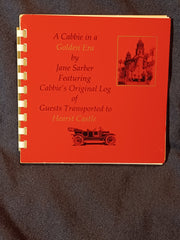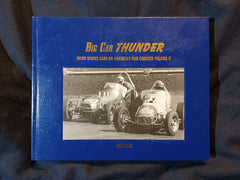Grand Canyon Country by M R Tillotson and Frank J Taylor. This copy given by famous accused murderer.
Grand Canyon Country by M R Tillotson and Frank J Taylor. Stanford University Press. 1929. 1st Edition. Inscribed to "Superintendent Tomlinson" from "Stanford University Press" signed in one hand by "Dave and Allene Lamson", probably in David Lamson's hand. The book itself is not at all scarce, but the associations are incredible. Tomlinson was Superintendent Mt Rainier Park. David Lamson was advertising manager at Stanford University Press, also was a writer, known for Matinee Theatre (1955) and We Who Are About to Die (1936). Accused of murdering his wife on May 30, 1933, he served 13 months in San Quenton prison and endured 3 trials before the Supreme Court reversed his conviction. His book, "We Who Are About to Die", is semi-autobiographical and is the basis of the movie of the same name in 1937. The murder of Allene Lamson trials were only over-shadowed because the Baby Lindbergh kidnapping and investigation were happening about the same time. Hardcover with no dust jacket. Tomlinson's bookplate inside the front cover. Moderate cover edge wear. No other previous owner markings. No tears, folds or creases to pages. Binding is tight with no looseness to pages. Not ex-library, not remaindered and not a facsimile reprint. For sale by Jon Wobber, bookseller since 1978. IH04a
"With David Lamson held as a suspect in San Jose, the press leaped on the story of a possible wife-murder on the bucolic Stanford campus. On the other side of the country, the hottest crime story of the era -- the 1932 kidnap and murder of the Lindbergh baby in New Jersey -- was capturing the nation's attention. By May 1933, no arrests had been made in the Lindbergh case, but newspapers were selling in huge numbers on the strength of sensationalist speculation. West Coast publishers took note and, when the Lamson case came along, reached for a similar bonanza.
It had all the elements of a great tabloid story: a gory death under mysterious circumstances, an unlikely murder suspect and an incongruous setting. Packs of journalists wearing snap-brimmed hats and carrying flash cameras swarmed the campus and the Santa Clara County Courthouse. Police had to close down Salvatierra Street the Sunday after the tragedy to control the crush of gawkers. The case was front-page news throughout the summer as reporters turned up fresh evidence, rumor and speculation. San Francisco papers -- the Examiner, the Call, the Chronicle -- hired motorcycle couriers to speed the copy and photos back from the courthouse and police headquarters in San Jose by deadline. The June 15 preliminary hearing was filmed by newsreel crews and shown -- three nights in a row -- at the American Theater in San Jose. The local Mercury-Herald called the courtroom the "pulsating center of a drama -- a tragedy in which the public has shown more interest than any similar hearing in the history of Santa Clara County.".....
On the evening of September 16, 1933, after eight hours of deliberation and three ballots, members of the seven-man, five-woman jury filed silently into the courtroom to render their verdict. Unnerved by their demeanor, defense attorney Edwin Rea inferred the worst. "Take it on the chin, kid," he whispered in Lamson's ear. Sitting behind the defendant, sisters Margaret Lamson and Hazel Thoits gasped as the foreman read the unanimous verdict: guilty of murder in the first degree. David sat impassively as the jury was polled. Judge Syer sentenced him to hang at San Quentin State Prison within 90 days, subject to appeal. " - stanfordmag.org
The conviction received widespread media coverage. The New York Times reported that "the academic calm of Palo Alto was shattered by the verdict. Friendships were disrupted, and academic circles were divided into two camps." Friction surfaced between the lawyers, too. Outside a hearing room 10 days later, defense attorney Rea and prosecutor Lindsay ("the battling barristers," according to one press account) got into a fistfight and had to be separated by a swarm of reporters. (Rea emerged with a swollen lip.) Later, in a letter to University President Ray Lyman Wilbur, Rea would conclude that "the tactics of the prosecution in this case, both those shown by the record and otherwise, are worse than murder."" - stanfordmag.org











